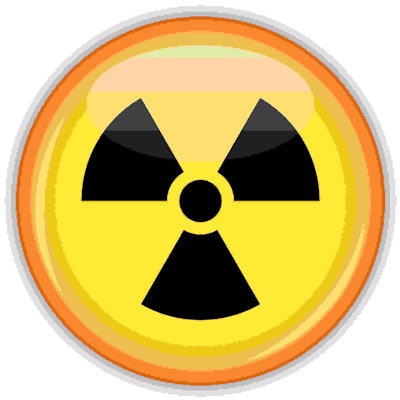
Are guidelines urging healthcare practitioners to reduce radiation dose when imaging patients simply inducing radiation phobia for procedures that have little to no health risk? That's the provocative stance of a new article published in the January 2017 issue of the Journal of Nuclear Medicine.
In the article, a group led by Jeffry Siegel, PhD, president and CEO of Nuclear Physics Enterprises in Marlton, NJ, criticizes the linear no-threshold (LNT) hypothesis, which states that radiation is harmful, regardless of the dose and dose rate (JNM, January 2017, Vol. 58:1, pp. 1-6). The LNT theory has influenced the development of guidelines on radiation dose exposure, which hold that exposure to very small levels of radiation -- such as those in nuclear medicine, CT, and x-ray studies -- can cause damage and should be limited wherever possible.
Siegel and colleagues believe the LNT theory has overstated the risks of exposure to low-level radiation.
"All the dose predictions of carcinogenesis are predicated on this fictional LNT theory; it is not real, it is not valid," he told AuntMinnie.com. "There is no credible evidence that has ever existed showing the harm or cancer-causing ability of low-dose radiation."
Flawed research?
Siegel and colleagues maintain that the LNT theory forms the basis of guidelines for radiation dose, such as ALARA, or "as low as reasonably achievable"; this only serves to reinforce radiophobia, or the fear of radiation. In their JNM article, Siegel et al cite more than two dozen studies that they believe contain flawed data based on the LNT theory, and that focus on molecular damage from ionizing radiation.
These studies also ignore evidence that low levels of radiation could have a protective effect, according to the authors. In other words, the human body has a natural, internal way to fight the adverse effects of low-level radiation exposure.
"We have 'adaptive protections,' so the body responds to any damage that low-dose radiation does. It repairs DNA damage," Siegel said. "And if the damage cannot be repaired, the body eliminates the damage through programmed cell death, known as apoptosis, or the immune system kicks in to prevent the cancer."
Proof of this process is endogenous damage, or DNA breaks, which occur mostly as a result of oxygen metabolism in the body. This process produces reactive oxygen species that attach to DNA and cause all double-strand breaks.
"But the body repairs those breaks or eliminates them through other mechanisms," he added. "If it weren't true, we would get cancer every minute of the day without any exposure to radiation."
How concerned should patients and clinicians be about exposure to low levels of radiation and repetitive scans? Siegel believes there is no credible evidence that shows the harm or cancer-causing ability of low-dose radiation.
He also said that pediatric patients who might undergo repeated imaging scans over time have protective immune systems that are better than those of adults.
"It has never been proven that children are more radiosensitive than adults," Siegel added.
Given the apparent academic disagreement over adverse side effects from radiation exposure, is it better to be safe than sorry when it comes to imaging? Siegel maintained there are pitfalls with that approach as well.
There's the "precautionary principle that if you don't know what's going on, it is better to be safe than sorry, but that is a one-sided approach," he said. "There is actual harm that is being done in medicine, [in] that if you lower the dose, you adversely affect image quality ... and people who have an underlying problem will not be accurately diagnosed."
One conclusion is certain: The debate over whether even low levels of radiation could adversely affect patients no doubt will continue.



















